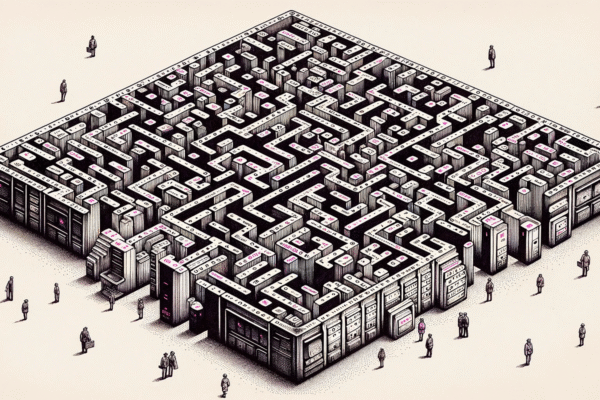

Improving Pedestrian and Cyclist Safety Through Integrated Traffic Management Systems
With rapid urbanization and the increasing need for sustainable transportation options, the safety of pedestrians and cyclists has become a significant concern in cities around the world. Pedestrian and cyclist fatalities are on the rise, accounting for a substantial proportion of road traffic deaths globally. Traditional traffic management systems, which primarily prioritize motor vehicle movement, often fail to adequately protect these vulnerable road users. However, advancements in technology, particularly the integration of intelligent traffic management systems (ITMS), are creating new possibilities for enhancing the safety of pedestrians and cyclists.
This article explores how integrated traffic management systems, when combined with technologies like speed detection cameras, smart signals, and real-time data monitoring, can improve safety outcomes for pedestrians and cyclists. We will also examine the current challenges and propose solutions for building safer and more inclusive urban transportation networks.
The Growing Need for Pedestrian and Cyclist Safety
In many cities, walking and cycling are encouraged as eco-friendly and sustainable modes of transportation. However, the infrastructure to support safe pedestrian and cyclist movement often lags behind, leaving these road users vulnerable to accidents, injuries, and fatalities. According to the World Health Organization, pedestrians and cyclists account for 26% of road traffic deaths globally. This alarming statistic calls for a fundamental rethinking of how traffic is managed, especially in urban areas where cars, cyclists, and pedestrians share the same spaces.
The primary safety issues faced by pedestrians and cyclists include:
- Lack of Protected Infrastructure: Many cities lack dedicated bike lanes or pedestrian crossings, forcing these road users to navigate through traffic dominated by motor vehicles.
- Speeding Vehicles: High vehicle speeds in urban areas pose a significant danger to pedestrians and cyclists. A pedestrian hit by a vehicle traveling at 50 mph is nearly five times more likely to be killed than a pedestrian hit at 30 mph.
- Poor Visibility: Inadequate street lighting, poor road markings, and obstructions can reduce the visibility of cyclists and pedestrians, especially at night or during inclement weather.
- Traffic Signal Timing: Traditional traffic signals often prioritize motor vehicles, with little consideration for the time pedestrians and cyclists need to safely cross streets or intersections.
- Driver Distraction: With the rise of smartphone use and in-vehicle infotainment systems, distracted driving has become a significant contributor to accidents involving pedestrians and cyclists.
The Role of Integrated Traffic Management Systems
Integrated Traffic Management Systems (ITMS) offer a holistic approach to managing urban traffic by combining various technologies, including sensors, cameras, data analytics, and communication networks, to monitor and control traffic in real-time. These systems are designed to optimize the flow of all types of traffic—motor vehicles, cyclists, and pedestrians—ensuring safer, more efficient urban mobility. By incorporating pedestrian and cyclist safety into ITMS, cities can reduce accidents and create a safer environment for non-motorized road users.
Here are several key components of an ITMS that can significantly improve pedestrian and cyclist safety:
1. Speed Detection Cameras for Enforcing Speed Limits
One of the most critical threats to pedestrian and cyclist safety is speeding. Vehicles moving at high speeds not only reduce the reaction time for drivers to avoid collisions but also increase the severity of injuries when accidents occur. Speed detection cameras play a vital role in enforcing speed limits, particularly in areas where pedestrians and cyclists are at higher risk, such as school zones, residential areas, and busy intersections.
Speed detection cameras are equipped with radar or laser technology to measure vehicle speeds. When a vehicle exceeds the speed limit, the camera captures an image of the vehicle and its license plate, which can be used to issue a ticket or warning to the driver. By strategically placing speed detection cameras in high-risk areas, cities can reduce speeding, thereby lowering the likelihood of accidents involving pedestrians and cyclists.
In addition to enforcement, the presence of speed detection cameras can act as a deterrent to speeding. Drivers are more likely to adhere to speed limits when they know they are being monitored, leading to safer road conditions for vulnerable users.
2. Smart Pedestrian Crossings
Smart pedestrian crossings are another key feature of integrated traffic management systems. These crossings use sensors and cameras to detect the presence of pedestrians waiting to cross the street. When a pedestrian is detected, the system can automatically adjust the timing of traffic signals to give pedestrians more time to cross safely. This technology is particularly beneficial at busy intersections where pedestrian crossing times are often too short.
Moreover, smart crossings can be equipped with LED lights embedded in the pavement, which illuminate when a pedestrian is crossing. This increases visibility for drivers, especially at night or in poor weather conditions, reducing the risk of collisions. In areas with high cyclist traffic, similar technology can be applied to create smart bike crossings that prioritize cyclist movement and improve their safety at intersections.
3. Dynamic Traffic Signal Control
Traditional traffic signals operate on fixed timing cycles, which do not account for real-time traffic conditions. In contrast, dynamic traffic signal control systems, a core component of ITMS, use real-time data from sensors and cameras to adjust signal timing based on current traffic conditions. This includes prioritizing the needs of pedestrians and cyclists, especially during peak traffic hours or in areas with high foot and bike traffic.
For example, if the system detects an increased number of cyclists or pedestrians waiting to cross at a particular intersection, it can automatically extend the green light duration for non-motorized road users. Additionally, dynamic signal control can reduce the wait time for cyclists and pedestrians, encouraging more people to use these sustainable modes of transportation.
4. Cyclist Detection at Intersections
Intersections are one of the most dangerous areas for cyclists, as they often have to share the space with motor vehicles making turns or changing lanes. Integrated traffic management systems can include cyclist detection technology that uses infrared sensors, cameras, or radar to identify when a cyclist is approaching an intersection. The system can then adjust the traffic signals to give cyclists a head start before motor vehicles, reducing the likelihood of collisions.
In some cities, separate bike signals have been introduced at intersections, allowing cyclists to cross the road independently of motor vehicles. When combined with real-time detection and ITMS, these bike signals can be dynamically controlled to improve the safety and flow of cyclist traffic.
5. Real-Time Data Sharing for Safety Alerts
Another benefit of integrated traffic management systems is the ability to share real-time data between different road users and traffic control centers. For example, connected vehicle technology allows vehicles to communicate with each other and with traffic infrastructure, such as signals and cameras. This can be extended to include cyclists and pedestrians who use mobile apps or wearable devices that interact with the traffic management system.
In the event of an emergency or hazardous situation, the system can send real-time safety alerts to pedestrians, cyclists, and drivers. For instance, if a speeding vehicle is detected approaching a pedestrian crossing, the system can alert the pedestrian via their smartphone, giving them time to move out of harm’s way. Similarly, cyclists can receive warnings about dangerous intersections or areas with high traffic congestion, allowing them to take alternate routes.
6. Geofencing for Pedestrian-Only and Low-Speed Zones
Geofencing technology can be used to create pedestrian-only zones or low-speed areas in busy urban centers. These geofenced areas are enforced by the ITMS, which can automatically lower speed limits for vehicles or restrict access to motorized traffic during certain hours. For example, in areas with high pedestrian activity, such as downtown shopping districts or near schools, geofencing can create safer environments by limiting vehicle speeds and ensuring that cyclists and pedestrians can move freely.
In addition, geofencing can be applied in residential neighborhoods or near parks where children and families are likely to be present. Vehicles that enter these zones are automatically monitored by speed detection cameras, and any violations result in immediate enforcement actions, such as fines or warnings.
7. Public Awareness and Education Campaigns
While technology plays a crucial role in improving pedestrian and cyclist safety, public awareness and education are also essential components of an integrated traffic management strategy. ITMS can be used to support educational campaigns by displaying safety messages on digital signage or through mobile apps used by cyclists and pedestrians. These campaigns can remind road users of the importance of following traffic rules, using designated crossings, and being aware of their surroundings.
Conclusion
Improving pedestrian and cyclist safety in urban areas requires a comprehensive approach that leverages advanced technology, including speed detection cameras, smart crossings, and dynamic traffic signal control. Integrated traffic management systems (ITMS) provide the framework to bring these technologies together, creating safer and more efficient transportation networks for all road users. By prioritizing the safety of pedestrians and cyclists, cities can reduce accidents, encourage sustainable transportation, and build more inclusive urban environments. Through a combination of real-time data, intelligent systems, and proactive enforcement, the future of urban mobility can be both safe and sustainable.

















